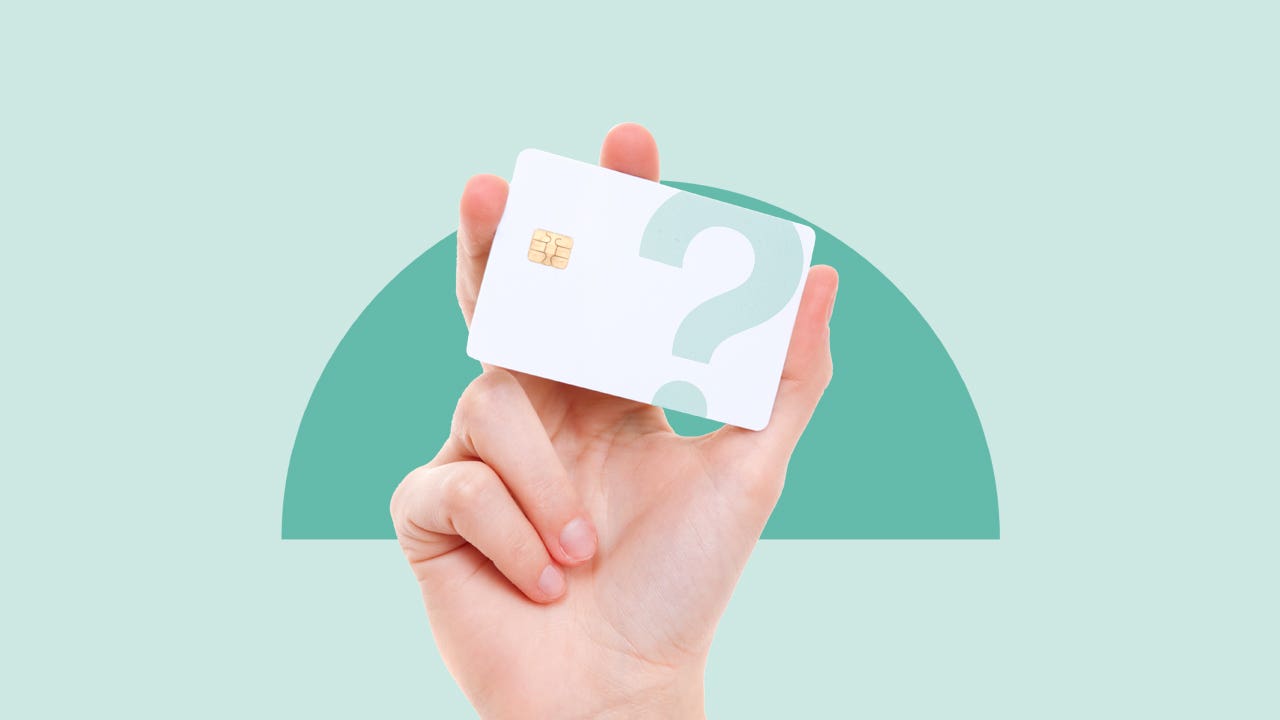Credit card information: The basics you need to know

The Bankrate promise
At Bankrate we strive to help you make smarter financial decisions. While we adhere to strict , this post may contain references to products from our partners. Here's an explanation for . The content on this page is accurate as of the posting date; however, some of the offers mentioned may have expired. Terms apply to the offers listed on this page. Any opinions, analyses, reviews or recommendations expressed in this article are those of the author’s alone, and have not been reviewed, approved or otherwise endorsed by any card issuer.
Key takeaways
- Printed on a credit card, you'll find the card number, the cardholder’s name, when the card expires and the card's security code — all the details you need to make purchases online or in person.
- To learn your credit limit, what you currently owe and the interest you’ll accumulate if you don’t pay by your due date, check your paper billing statement or online account.
- It’s also important to understand the key terms you might encounter on bills, when using rewards or when performing certain kinds of transactions.
Whether you’re paying for groceries or shopping online, using a credit card is an integral part of everyday life for many people. But how well do you know and understand your credit card’s terms — and what do they even mean?
Understanding this basic information, as well as how to use your credit card, is essential if you want to get the most out of all your card has to offer while avoiding debt and mistakes detrimental to your credit. Whether you’re just starting to build credit or you’re a seasoned cardholder, this glossary can help you understand some basic terms that you may come across when using your credit card.
Credit card information
Credit cards are financial tools, and knowing how they work will help you maintain and build upon your experience while using them.
There is important information found on the card itself that you’ll be asked for when making purchases, logging into accounts or adding cards to digital wallets. Here are some of the key pieces of credit card information you may be asked to provide and where to find each one:
Information that’s printed on your credit card
- Credit card number:
- Your credit card number is a 15- or 16-digit number that is usually embossed or printed on the front of your credit card toward the bottom, though it’s becoming increasingly common for credit card issuers to print the card number on the back.
- Cardholder name:
- The cardholder name is also embossed or printed on either the front or the back of the credit card toward the bottom. Because some merchants will ask for ID when a customer makes a purchase, the name on the card should match the name on a cardholder’s government-issued ID. Most often it’s a complete name, but it may appear as the first initial and the last name or the first name, middle initial and last name.
- Expiration date:
- The expiration date is generally found between the card number and cardholder name, either on the front of the card or the back. Expiration dates display the month and year the credit card expires, but the actual expiration date is usually the final day of the month listed.
- CVV or security code:
- A Card Verification Value (CVV), also called a security code, is the three-digit number located on the back of your credit card near the signature box, typically under the magnetic strip. If you have an American Express card, the CVV is a four-digit code located on the front of your card.
How to find your account information
In addition to the identifying information found on the card itself, you should be familiar with your card’s account information. You can find your account information if you:
- Look on your paper billing statement
- Log into your online account
- Use your card issuer’s mobile app
- Call your credit card issuer and ask for specific information
This information can help you know when to make payments and redeem any rewards you may have earned, as well as keep you updated with your account balance and credit limit.
Some of your account information is reported to credit bureaus as a part of your credit report, which shows your active account history and helps determine your credit score. If you’ve never read your credit report before, you can request copies for free through the government-authorized website AnnualCreditReport.com.
The following information can help you better understand the details of your credit card account and track your credit history:
Credit limit
Your credit limit is the amount of credit you’re approved for by your card issuer. To keep your account in good standing, your balance should remain under your credit limit. It’s best practice to keep your card balance as low as possible. Using no more than 30 percent of your credit limit at a time will allow you to keep a good credit utilization ratio, which in turn can help you keep a healthy credit score.
Current balance
Your current balance is the total amount of credit you have used at the time of billing. It will include purchases, balance transfers, cash advances and convenience checks. Interest is applied to your balance if you don’t pay in full each statement cycle and may be different for various kinds of charges.
Interest rate (APR)
Your interest rate is determined by your annual percentage rate — or APR — and is added to your balance at the end of a billing cycle. It’s called an APR because it is the total annual amount you would be charged in finance charges in a year, so your actual interest rate on a given month is usually only about a twelfth of this number. You can check your billing statement to keep up with your current interest rate. It can be complicated to calculate exactly how much you’ll owe, but your statement should outline it clearly — or you can use a credit card payoff calculator to do the math for you.
It is important to note that when we speak about a card’s APR, we usually mean purchase APR — the interest you pay on regular purchases. However, there are other types of interest rates to be aware of, including:
Types of interest rates
- Introductory APR:
- This is an initial APR that can apply to purchases or balance transfers for a limited period. Zero-interest credit cards usually give you between 12 and 18 months of 0 percent intro APR.
- Cash advance APR:
- Cash advances come with their own terms, including APR. Generally, the cash advance APR is higher and doesn’t offer a grace period. Some card issuers may also use this APR for any overdraft protection advances you incur.
- Balance transfer APR:
- Some cards have separate APRs for balance transfers that usually kick in after the introductory period is over. If your card does have a separate APR for balance transfers, it’ll be outlined in your card’s rates and fees.
- Penalty APR:
- This is typically the most expensive APR and applies to missed and returned payments. This is the APR you want to avoid ever getting charged if possible.
Keep in mind: An APR can be variable or fixed. A variable APR is more common and changes based on the prime rate (the interest rate banks use to calculate how much to charge their most creditworthy customers). A fixed APR, on the other hand, is locked.
Important credit card terms
Understanding certain credit card terminology beyond what’s on your card statement is crucial for managing your credit cards wisely. Some of those terms include:
Balance transfer
When you move a balance from one card to another, you’re doing a balance transfer. Some cards, aptly called balance transfer credit cards, are geared toward consumers who are trying to pay down high-interest debt and are looking to maximize the value they get out of a balance transfer. These cards typically offer an introductory 0 percent APR on balance transfers, which can allow the new cardholder to pay no interest for a set time period even though the card is carrying a balance month-to-month. This is often an excellent method of debt consolidation — provided that the cardholder can pay off the debt before the end of the intro period.
Billing cycle
A billing cycle is the length of time between the last and the current statement dates. A typical billing cycle is 30 days. According to the Credit Card Accountability Responsibility and Disclosure Act— more commonly called the CARD Act — your due date must be at least 21 days from the end of the billing cycle.
Cash advance
Not all transactions on your credit card are treated equally. For example, you have an option to withdraw cash from your credit card, but this type of withdrawal will be considered a cash advance. A cash advance begins accruing interest immediately and has its own terms, APR and fees. Cash advances also typically come with steep interest rates.
Grace period
The period between the end of a billing cycle and the payment due date is the grace period. During this time, an issuer doesn’t charge you interest. If you pay off your balance by the due date, you’ll avoid interest charges.
Minimum payment
The minimum payment is the lowest amount that you can pay on a balance to keep your account in good standing. Paying less than the minimum amount will be reported as a missed payment to credit bureaus. Minimum payments are determined based on your current balance and interest rate.
Rewards
Rewards can come in the form of points, miles or cash back. The number of rewards you earn will depend on the bonus categories for your rewards credit card and the rewards structure.
Generally, the rewards you earn will pool together in your credit card account until you choose to redeem them. Your total rewards balance and the level of rewards available for redemption will appear on your statement.
Types of credit cards
There are many different types of credit cards available, and it’s important to understand that not all cards fit all lifestyles — and you may not qualify for a specific card, based on your credit score. You should always consider the unique factors that influence how you will use and benefit from a card before you get it. For example, do you want a card you can use for everyday spending and get rewarded with cash back? Are you a college student trying to build credit? A card decision is never one size fits all.
A few of the most common types of credit cards include:
Credit card type breakdown
- Rewards cards:
- The best rewards cards will let you earn points or cash back for everyday purchases, so you can benefit while spending money you would be spending anyway.
- Travel cards:
- Travel cards reward frequent travelers with credits you can use toward travel purchases or points you can transfer to an airline or hotel. The best travel cards also offer exclusive perks like airport lounge access or companion passes.
- Student cards:
- Designed for young people with little or no credit history, these cards make it easy to build your credit. Many student cards even offer cash back rewards for spending in certain popular categories, like restaurant, rideshare and grocery store purchases.
- Secured cards:
- Unlike the vast majority of unsecured credit cards, secured cards require a security deposit as collateral. This deposit then acts as your credit limit. Secured credit cards are easy to get approved for in most cases and are a great way to build or repair credit.
- Store cards:
- Store cards are offered through a specific retail store and can only be used at that store (or family of stores). Generally they have some of the highest interest rates, but can be a good option if you shop at a particular store frequently and want to take advantage of cardholder perks like discounts or deferred interest.
- Business cards:
- Business credit cards operate under a different set of rules and regulations than consumer credit cards, though the terms and language used to talk about them are similar. They’re geared toward sole proprietors and small business owners who need a line of credit and want to earn rewards on business-related spending.
Credit card fees
You’ll also come across various types of credit card fees. It’s best to get acquainted with all of them to avoid unexpected charges. We’ve compiled a list of the different types of fees below:
Types of credit card fees
- Annual fee:
- Premium credit cards (and even a few not-so-premium ones) often come with annual fees. An issuer charges customers an annual fee each year for holding the card, although some cards may waive it for the first year or refund it if you meet certain spending thresholds. If you have a card with an annual fee, you’ll want to make sure the benefits and perks of holding the card outweigh what you’re spending on that fee.
- Balance transfer fee:
- A balance transfer may save you a lot of money on interest, but the transaction itself isn’t free. When you transfer a balance from one card to another, the issuer will typically charge you a balance transfer fee of 3 to 5 percent. The fee minimums can also vary, but are typically from $5 to $10.
- Cash advance fee:
- A cash advance is an expensive transaction in more than one way. Not only do you have to pay a higher interest rate that starts accumulating immediately, but you’re also charged a cash advance fee. A typical cash advance fee is around 5 percent or a minimum of $10 per transaction.
- Foreign transaction fee:
- Before you go on a trip abroad, check whether your card charges a foreign transaction fee. A foreign transaction fee is charged on purchases you make where a currency conversion has to take place. This includes purchases done in places outside of the U.S., but also includes online retailers based abroad. The fee is usually around 3 percent per transaction.
- Late payment fee:
- Missing a payment on your credit card is never good news, especially considering that you’ll be charged a late payment fee. The first time you miss a payment, your issuer may charge a lower late payment fee, typically up to $25, depending on the card. However, subsequent missed payments can cost much more, sometimes up to $41 per billing cycle.
The bottom line
A credit card is a useful financial tool, but it can be a danger to your financial health if you misuse it. To avoid that, make sure you understand the language that credit card issuers use to describe your card details and fees. By knowing this general credit card information and your card’s terms and conditions, you can know what to expect with each transaction and payment you make. Plus you can put yourself in a better position to get the most out of today’s best credit cards on the market.
Related Articles



